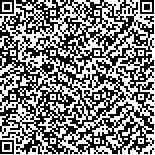下载中心
优秀审稿专家
优秀论文
相关链接
摘要

大面积分布目标的合成孔径雷达 (SAR)回波模拟需要大量的运算 ,文中提出了一种合成孔径雷达回波模拟的快速算法 ,算法利用时域插值和FFT来缩减运算量 ,对于大面积目标回波模拟时 ,该算法有很高的效率。文中详细分析sinc函数插值所带来的误差以及补偿方法 ,并在次基础上提出了一种利用增采样插值方法 ,该方法以增加少量运算为代价 ,使得模拟精度的大幅度提高。文中比较了传统方法和基于FFT的快速SAR分布目标回波模拟算法的模拟结果 ,证明了这种快速算法确实行之有效
The simulation of distributed targets is very important to the design of synthetic aperture radar (SAR) systems. Since the end product is SAR images, the echo of SAR signals needs to be simulated and then processed form SAR images, and the parameters needs to be measured and the performance of the images should be, and then evaluated. The designing parameters of SAR could be adjusted to meet the requirement of users before developing SAR systems, specially in space-borne SAR systems. The simulation data is also needed during the developing and debugging of a space-borne SAR real-time processor. Another purpose of simulation is to supply a great deal of simulation images to train image users of space-borne SAR before it launch. Since significant computation is required to simulate a large area distributed targets, it may speed a lot of time, so it is very important to research a more efficient algorithm. A fast algorithm based on FFT is presented in this paper. It reviews the procedure of SAR systems return wave formed. A distributed target can be divided into many more facets, and each facet can be considered as a point targets with specific Radar Cross-Section (RCS) and unlimited small size. Generally speaking, the SAR raw signal is the appropriate superposition of returns from each facet. Noticeable, each return from every facet is the convolution of an impulse with specific amplitude and phase and the transmitting signal of SAR. So we can calculate the superposition of each impulse from each facet first. And then we can get the Fourier Transform (FT) of returns from all facets by multiply the Fourier Transform of impulses and transmitting signal. Finally, the raw returns wave can be generated by taking an Inverse Fourier Transform (IFT). Since SAR is a discrete and band-limited system, the impulse can be calculated by an interpolation with sinc function kernel in time-domain. And the Fourier Transform can be calculated using fast Fourier Transform (FFT). Interpolating error depends on the amount of interpolated points and the impulse position between two sampling points. More interpolated points, less error, and impulse position is closed to any of the two sampling points, the error is decreased. The relationship between the error and the two factors is presented in detail in this paper. To improve the precision of interpolations, the amount of interpolated points can be increased. But this method may increase computation linearly. The other method is reducing the interval of sampling points. Based on the second idea, an improved algorithm is introduced. It refer to upsampling and extending spectrum before Interpolating, and a low-pass filter and downsampling after Fourier Transform. This algorithm can improve efficiency and precision as the cost increasing its FFT computation. Finally, the algorithm is implemented in a code whose performance is described and illustrated by a number of examples.

